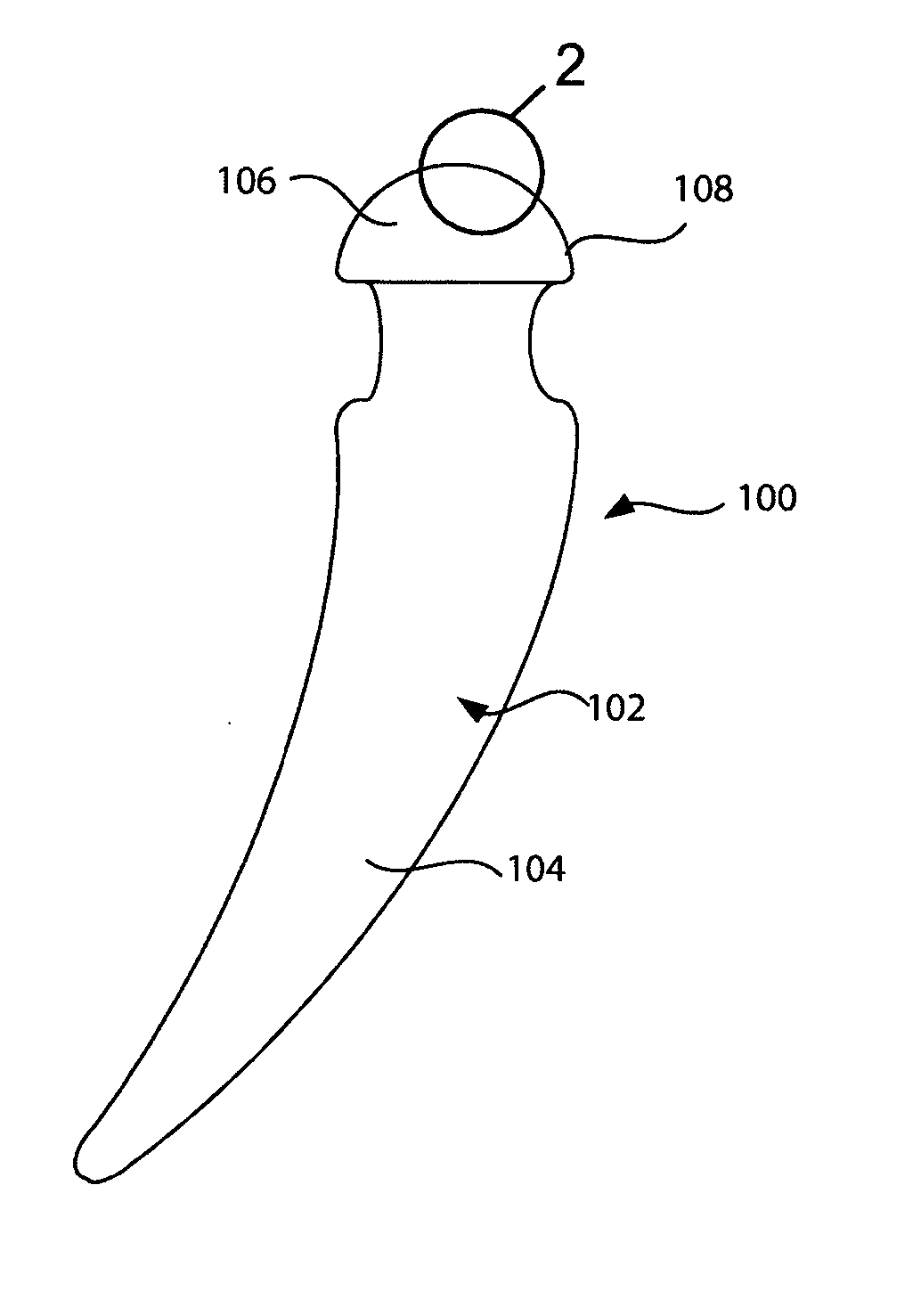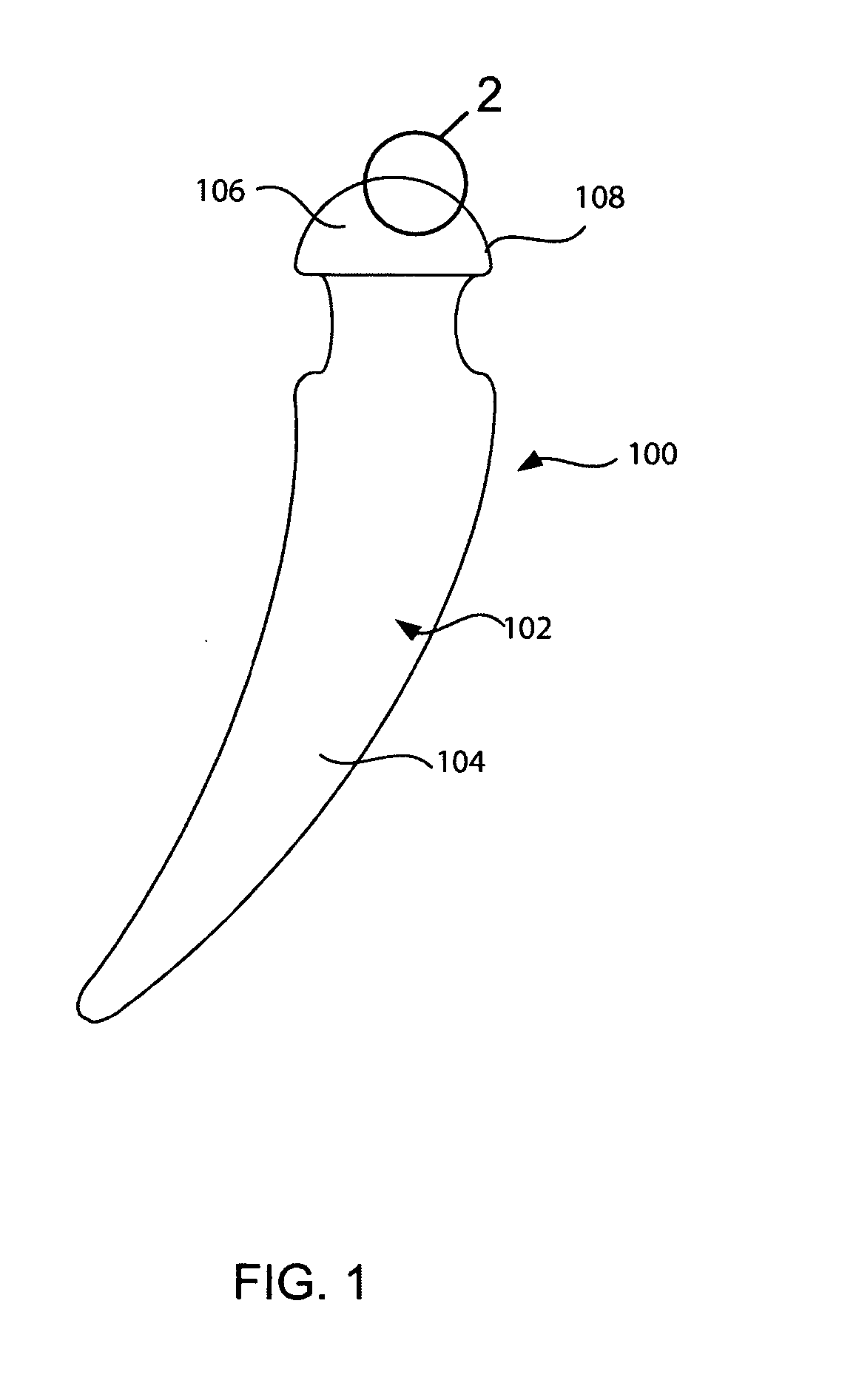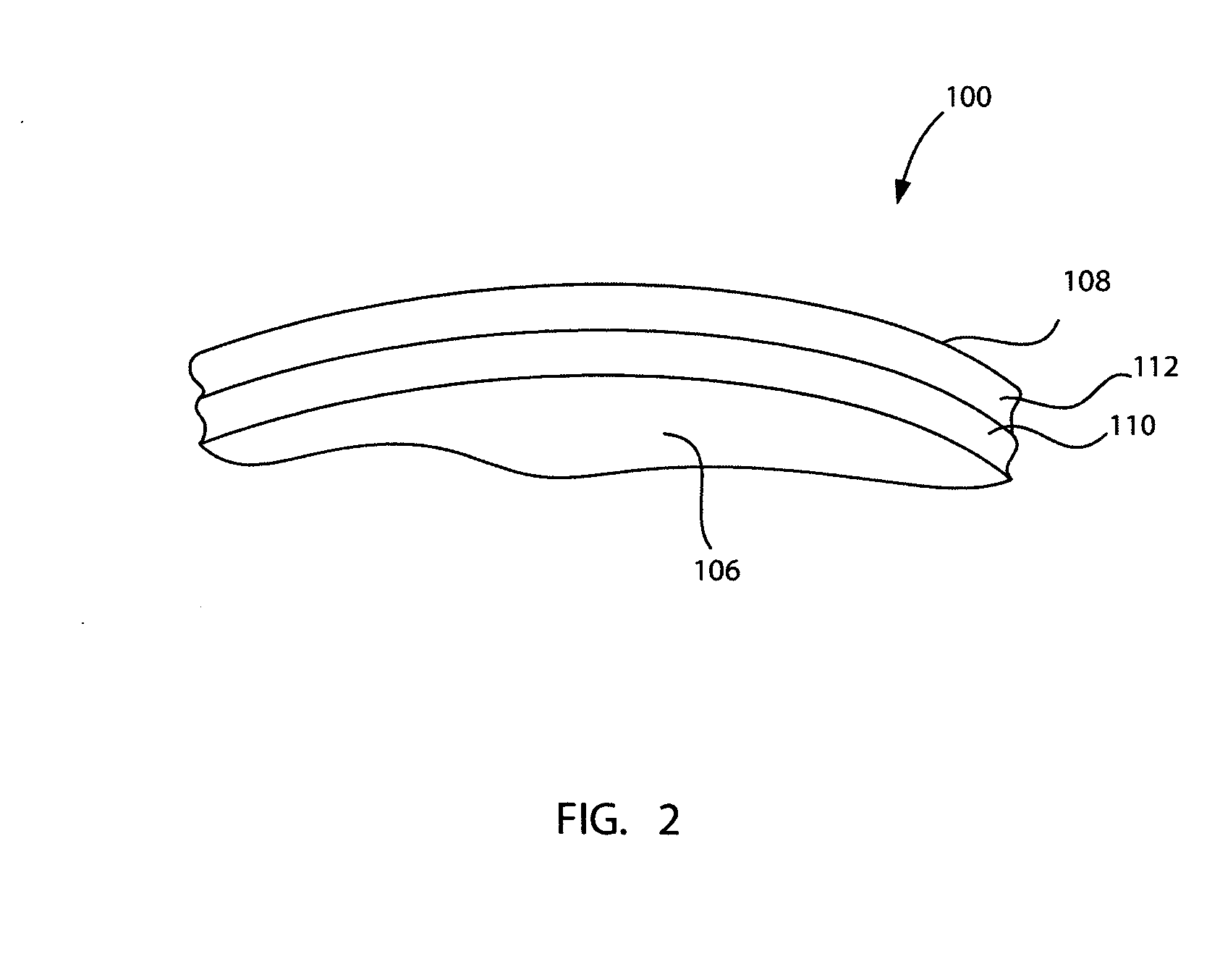Laser based metal deposition (LBMD) of implant structures
a metal deposition and metal technology, applied in the direction of dental implants, solid-state diffusion coatings, elbow joints, etc., can solve the problems of wear or bone ingrowth characteristics, device fatigue properties that cannot be optimized for specific properties specific to certain portions of implants, and the inability to achieve the effect of not diminishing the porosity of porous materials
- Summary
- Abstract
- Description
- Claims
- Application Information
AI Technical Summary
Benefits of technology
Problems solved by technology
Method used
Image
Examples
Embodiment Construction
[0052] The following description is the best embodiment presently contemplated for carrying out this invention. This description is made for the purpose of illustrating the general principles of this invention and is not meant to limit the inventive concepts claimed herein.
[0053] With reference to FIG. 1, a preferred embodiment of the present invention will be described in terms of a hip prosthesis (hip) 100 for implanting in the body of a patient. However, this is only by way of example, and it should be understood the present invention can practiced on many other medically implanted devices, including without limitation, knee, shoulder and elbow prostheses, as well as many other devices. Note FIG. 5, discussed below.
[0054] The hip prostheses 100 must be constructed completely of biocompatible materials in order to ensure acceptance of the prostheses by the patient's body. A biocompatible material is one that will not cause an adverse reaction with a host patient, and that will n...
PUM
| Property | Measurement | Unit |
|---|---|---|
| Fraction | aaaaa | aaaaa |
| Thickness | aaaaa | aaaaa |
| Power | aaaaa | aaaaa |
Abstract
Description
Claims
Application Information
 Login to View More
Login to View More - R&D
- Intellectual Property
- Life Sciences
- Materials
- Tech Scout
- Unparalleled Data Quality
- Higher Quality Content
- 60% Fewer Hallucinations
Browse by: Latest US Patents, China's latest patents, Technical Efficacy Thesaurus, Application Domain, Technology Topic, Popular Technical Reports.
© 2025 PatSnap. All rights reserved.Legal|Privacy policy|Modern Slavery Act Transparency Statement|Sitemap|About US| Contact US: help@patsnap.com



